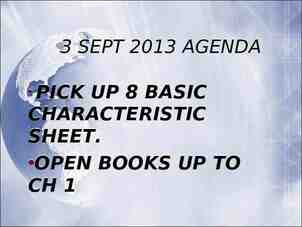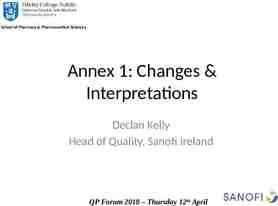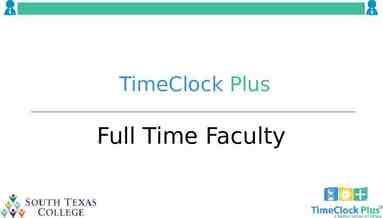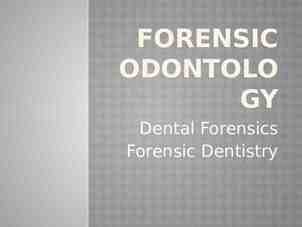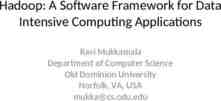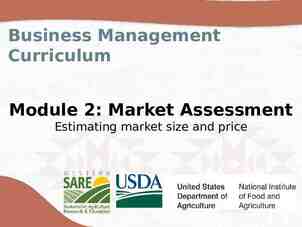Modifications For The Gifted and Talented In The Science Classroom
9 Slides177.50 KB

Modifications For The Gifted and Talented In The Science Classroom Submitted by Leigh Smith, MEd. In Science Education Harris County High School

Objective The objective of this electronic guide is to provide modification options for enhancing the instruction of a Gifted and Talented student in the average science classroom. While Honors Level Science classes are available at Harris County High School (as well as in high schools around the State of Georgia), many times Gifted and Talented students are placed in the average science classroom. Modifications in that classroom are the key to providing the enrichment needed to challenge the Gifted and Talented student. Science education needs to be a rewarding learning experience for students at all learning levels.

Characteristics of a Gifted and Talented Student Is highly curious Plays around, yet tests well Discusses in detail, elaborates 1-2 repetitions for mastery of content Prefers adults Manipulates information Is keenly observant Draws inferences; constructs abstractions Thrives on complexity (Source: Janice Szabos, Challenge Magazine)

Modification One: Pre-Assessment As a High School Science teacher, it is important that we realize that students will have some prior knowledge of the content we teach in our courses from their middle school and elementary school science classes. The Gifted and Talented student has retention abilities far above the average learner. The instruction of the Gifted and Talented student can be easily enhanced by a pre- assessment. Information that the Gifted student has retained does not need to be re-taught. After a teacher has determined the proficiencies of the Gifted student in the unit being taught, alternate activities can be assigned to enhance the student’s prior knowledge while the rest of class receives instruction on the required standards. Georgia Online Assessment could be utilized as a beneficial pre-assessment tool (tests can be modified to only include questions related to the performance standards being addressed like topics in ecology or chemical reactions). Teachers can access this site at www.georgiaoas.org.

Modification Two: Adjusted Questioning Techniques and HigherOrder Questions Based on Bloom’s Taxonomy, the Gifted and Talented student needs to have questions posed in the “analysis,” “synthesis,” and “evaluation” levels of learning. This can be fairly easily achieved in a classroom where students are heterogeneously grouped. It is IMPERITIVE for the Science teacher to understand, however, that Gifted and Talented students are not given MORE work or questions to answer, but HIGHER-ORDER questions that will challenge them. Example Questions Topic: Predator-Prey Relationships Knowledge: Identify the predator in the example of a hawk eating a mouse. Understanding: Describe the relationship a hawk has to a mouse. Application: What effect does an increase in mouse population have on the survival rate of a hawk? Analysis: Graph the populations of both hawks and mice over several generations and analyze the trends. Synthesis: Design a scenario in which an established ecosystem that contains both hawks and mice is affected by a natural disaster. How does this affect the populations of the hawks and mice? Evaluation: Do you believe that it is wrong for the hawk to hunt mice for food? What are the positive and negative aspects of the predation of mice?

Modification Three: Learning Centers If the Georgia Performance Standards have introduced new science curriculum that has not been addressed in lower grade levels, it is also important to remember that the Gifted and Talented student may master the concepts being taught more quickly than the average student. Learning Centers enable a science teacher to provide challenging activities for the Gifted student to engage in while the rest of the class finishes the assignment. Learning centers are usually in a designated area in the classroom. There should be a variety of activities for the student to choose from based on their interests. All activities should relate to the topic being addressed in class. Examples of Activities in a Chemistry Learning Center: On-line web sites that allow the student to conduct virtual labs that relate to the topics being covered. An example of virtual labs sites is found at http://www.kagaku21.net/en/laboratory/ . Tutorial and practice websites where students are challenged with on-line problems. An example of a website in which students are quizzed is found at http://www.sciencegeek.net/APchemistry/APtaters/directory.shtml . Games to enhance the topic in Chemistry being covered like Hotel Electron and Ion Dominoes.

Modification Four: Social Action Projects Students already determined to be competent in a topic of study in their Science class can be assigned a Social Action Project. These projects can enhance knowledge, develop values, create leadership experiences, and expose students to future areas of study or potential career fields. The Social Action project should somehow be related to the standard being addressed in the class. Students should research the problem, come up with thoughtful solutions, and, if possible, implement those solutions within the realm of their school or community. Example of a Social Action Project Ideas in Biology: Ways to address the increased concerns of global warming within the community. How to address the benefits of recycling while making the endeavor cost-effective for Harris County Waste Management? Are there benefits to cloning and how can religious and ethical concerns be addressed but still allow for research and development?

Modification Five: Independent Study Independent study has always been a cornerstone of Science education in the form of Science Projects. Students are allowed to choose a topic in which they are interested. Students then research the topic, develop a hypothesis, develop a research plan or experimentation procedure, and analyze the results they obtain. All areas of Bloom’s Taxonomy are addressed in a Science Project. To meet GPS requirements within the high school Science classroom, students should be given parameters such as limiting choices to the course in which they are enrolled (no chemistry or physics projects in a biology class), addressing a specific standard required by GPS (such as the reaction rate of enzymes within certain pH levels), and individualizing the project so that no duplication of topics occurs among classmates. There are many web sites available in which students can read about successful science projects or get ideas on areas of interest they would like to research. Examples of sites include http://www.all-science-fairprojects.com/ and http://www.terimore.com/ .

Sources “Blooms Taxonomy.” http://www.officeport.com/edu/blooms.htm “Note the Difference.” Janice Szabos, Challenge Magazine. (Received from Marty Oxford, Characteristics of Gifted Children and Youth Course). “Georgia On-Line Assessment.” www.georgiaoas.org “Teaching Strategies For Differentiation of Instruction 2.4.” DoDEA 2590.2-G, January 2006.

